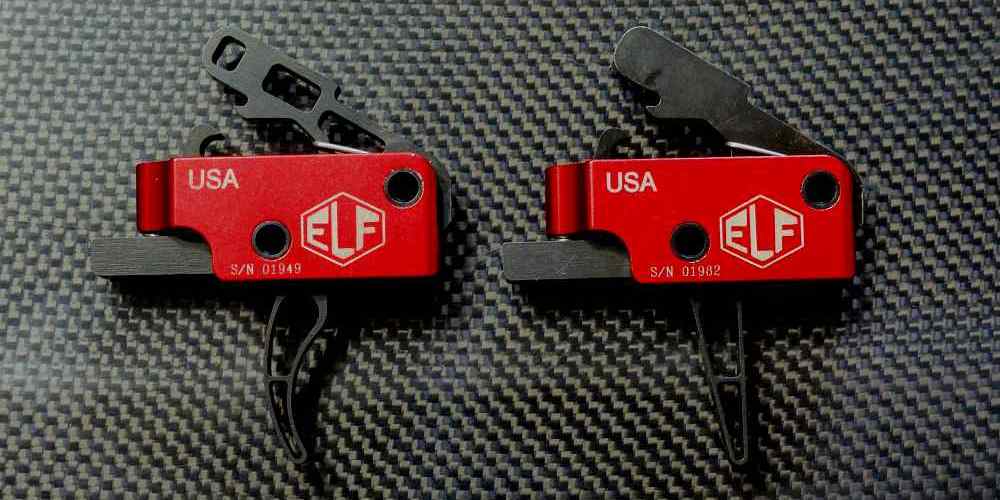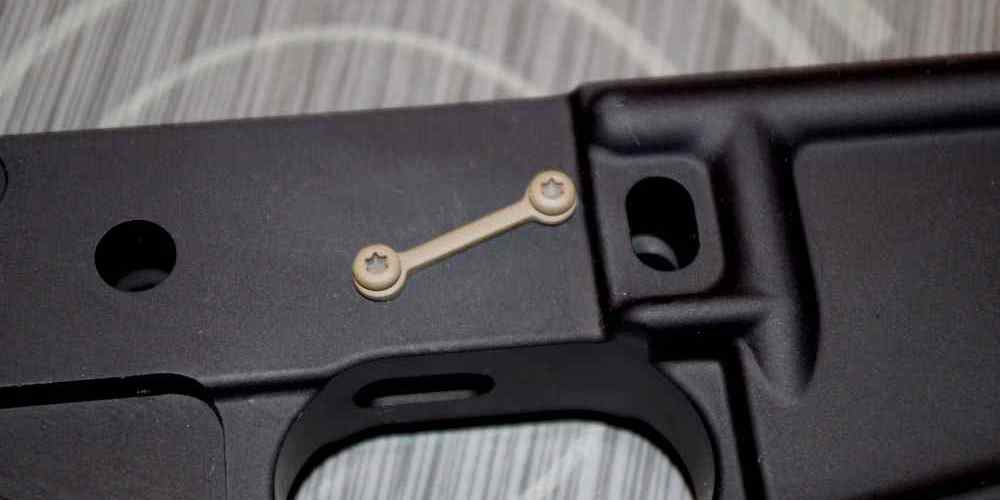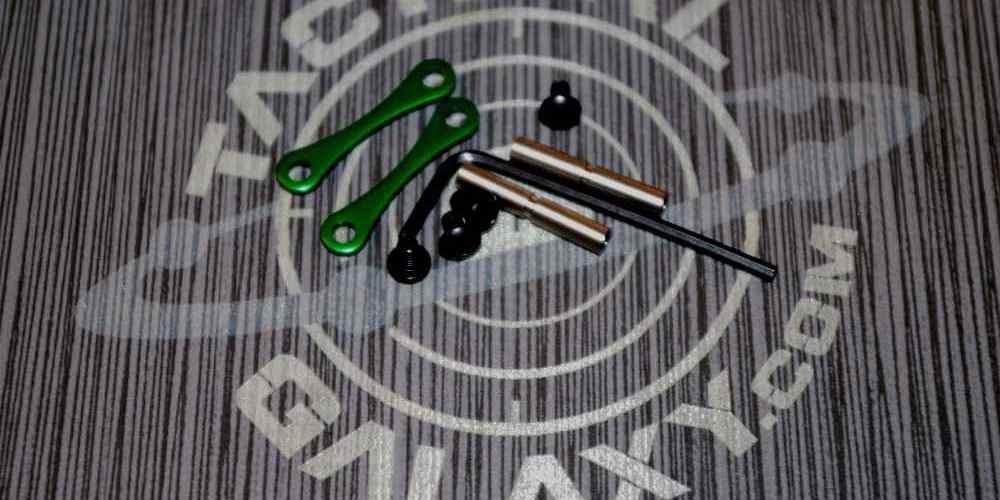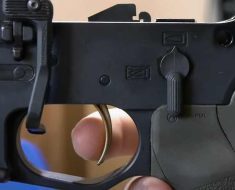“Choose your trigger shape, unleash your precision.”
Straight vs. Curved AR15 Triggers: Pros and Cons
When it comes to choosing the right trigger for your AR15, there are a few key factors to consider. One of the most important decisions you’ll need to make is whether to go with a straight or curved trigger. Both options have their own set of pros and cons, and ultimately, the choice comes down to personal preference.
Let’s start by discussing straight triggers. Straight triggers have a flat surface that allows for a consistent trigger pull. This can be beneficial for shooters who prefer a more linear feel when pulling the trigger. Some shooters find that straight triggers provide a more natural and comfortable shooting experience, as they don’t have to worry about their finger slipping off the trigger.
On the other hand, curved triggers have a rounded surface that can provide a different feel when pulling the trigger. Some shooters find that curved triggers offer a more ergonomic grip, as the curve of the trigger can fit more naturally into the curve of the finger. This can help reduce fatigue during long shooting sessions and provide a more comfortable shooting experience overall.
One of the main advantages of straight triggers is that they can help improve accuracy. The flat surface of a straight trigger allows for a more consistent trigger pull, which can help reduce the chances of jerking the trigger and throwing off your shot. This can be especially beneficial for precision shooting or competitive shooting where accuracy is key.
Curved triggers, on the other hand, can provide a smoother trigger pull. The rounded surface of a curved trigger can help reduce friction between the trigger and the finger, allowing for a more fluid and natural pull. This can be beneficial for shooters who prefer a lighter trigger pull or who want a more responsive trigger.
In terms of comfort, both straight and curved triggers have their own advantages. Some shooters find that straight triggers are more comfortable to use, as they provide a more stable platform for the finger to rest on. Others prefer curved triggers, as they can provide a more ergonomic grip that fits naturally into the curve of the finger.
When it comes to customization, both straight and curved triggers offer a wide range of options. You can find triggers in different materials, finishes, and styles to suit your personal preferences. Whether you prefer a sleek and modern look or a more traditional design, there are plenty of options available for both straight and curved triggers.
Ultimately, the choice between a straight and curved trigger comes down to personal preference. Some shooters may prefer the consistent feel of a straight trigger, while others may prefer the ergonomic grip of a curved trigger. Whichever option you choose, make sure to test out different triggers to see which one feels most comfortable and natural for you.

In conclusion, both straight and curved triggers have their own set of pros and cons. Whether you prefer the consistent feel of a straight trigger or the ergonomic grip of a curved trigger, there are plenty of options available to suit your personal preferences. Take the time to test out different triggers and see which one feels best for you. Happy shooting!
How Trigger Shape Affects Shooting Performance
When it comes to shooting performance, every detail matters. From the type of ammunition used to the grip on the firearm, each element can impact the accuracy and comfort of the shooter. One often overlooked aspect of a firearm is the trigger shape. Specifically, the debate between straight and curved AR15 triggers has been a topic of discussion among shooters for years.
The shape of a trigger can have a significant impact on how a shooter interacts with their firearm. A straight trigger, as the name suggests, is a flat trigger that does not have a curve in it. On the other hand, a curved trigger has a slight bend in it, which can provide a different feel when pulling the trigger. Both trigger shapes have their own set of advantages and disadvantages, and ultimately, the choice between the two comes down to personal preference.
One of the main differences between straight and curved triggers is the way they distribute pressure on the shooter’s finger. A straight trigger provides a more even distribution of pressure, which can help reduce fatigue during long shooting sessions. This can be particularly beneficial for shooters who spend hours at the range or participate in competitions where accuracy is key. On the other hand, a curved trigger can provide a more natural feel for some shooters, as it mimics the natural curve of the finger when pulling a trigger.
In terms of shooting performance, both trigger shapes can be equally effective. However, some shooters may find that they have a preference for one over the other based on their shooting style and comfort level. For example, shooters with larger hands may find that a curved trigger fits more comfortably in their hand, while shooters with smaller hands may prefer the feel of a straight trigger.
Another factor to consider when choosing between straight and curved triggers is the type of shooting you will be doing. For precision shooting, such as long-range shooting or competitive shooting, a straight trigger may be the preferred choice due to its even pressure distribution and potential for increased accuracy. On the other hand, for rapid-fire shooting or tactical applications, a curved trigger may provide a more natural feel and quicker response time.
Ultimately, the choice between straight and curved triggers comes down to personal preference and comfort. Some shooters may find that they prefer the feel of a straight trigger, while others may prefer the feel of a curved trigger. It is important for shooters to experiment with both trigger shapes to determine which one works best for them.
In conclusion, the debate between straight and curved AR15 triggers is a matter of personal preference. Both trigger shapes have their own set of advantages and disadvantages, and ultimately, the choice between the two comes down to what feels most comfortable for the shooter. Whether you prefer the even pressure distribution of a straight trigger or the natural feel of a curved trigger, the most important thing is to find a trigger shape that allows you to shoot accurately and comfortably.
The Ergonomics of Straight vs. Curved AR15 Triggers
When it comes to customizing your AR15 rifle, one of the key components that can greatly affect your shooting experience is the trigger. The trigger is the mechanism that allows you to fire your rifle, and there are two main types of triggers to choose from: straight and curved. Each type has its own set of advantages and disadvantages, and ultimately, the choice between the two comes down to personal preference.
Straight triggers have a flat surface that allows for a more consistent trigger pull. This can be beneficial for shooters who prefer a more linear feel when pulling the trigger. The straight design can also help with finger placement, as it provides a clear reference point for where to place your finger. This can be especially helpful for shooters with smaller hands or those who struggle with finger placement on a curved trigger.
On the other hand, curved triggers have a more traditional design that follows the natural curve of your finger. This can provide a more comfortable shooting experience for some shooters, as it allows for a more natural finger placement. The curved design can also help with trigger control, as it can provide a more tactile feel when pulling the trigger.
In terms of ergonomics, both straight and curved triggers have their own set of benefits. Straight triggers can provide a more consistent trigger pull, while curved triggers can offer a more comfortable shooting experience. Ultimately, the choice between the two comes down to personal preference and what feels most comfortable for you as a shooter.
When it comes to shooting accuracy, both straight and curved triggers can be equally effective. The key to accuracy lies in proper trigger control and technique, rather than the type of trigger you choose. However, some shooters may find that they have better control and accuracy with one type of trigger over the other. It’s important to experiment with both types of triggers to see which one works best for you.
In terms of customization options, both straight and curved triggers come in a variety of styles and materials. Some shooters may prefer a lightweight aluminum trigger, while others may opt for a more durable steel trigger. The choice of material can affect the overall feel and performance of the trigger, so it’s important to consider your shooting style and preferences when choosing a trigger.
Overall, the choice between a straight and curved trigger comes down to personal preference and what feels most comfortable for you as a shooter. Both types of triggers have their own set of advantages and disadvantages, so it’s important to experiment with both to see which one works best for you. Whether you prefer the consistent feel of a straight trigger or the natural curve of a curved trigger, the most important thing is to find a trigger that helps you shoot with confidence and accuracy.
Personal Preference: Choosing the Right Trigger for You
When it comes to customizing your AR15 rifle, one of the most important decisions you’ll have to make is choosing the right trigger. The trigger is a critical component of any firearm, as it is responsible for initiating the firing sequence. There are two main types of AR15 triggers: straight and curved. Each type has its own set of advantages and disadvantages, and ultimately, the choice between the two comes down to personal preference.
Straight triggers are exactly what they sound like – straight. They have a flat surface that extends horizontally from the trigger shoe. This design allows for a more consistent trigger pull, as the shooter’s finger can make contact with the trigger at the same point every time. This can lead to improved accuracy, as the shooter can develop a more consistent trigger squeeze.
On the other hand, curved triggers have a slight curve to them, which some shooters find more comfortable to use. The curve of the trigger can help guide the shooter’s finger into the proper position, making it easier to maintain proper trigger control. Some shooters also find that curved triggers provide a more natural feel, as they mimic the natural curve of the finger.
In terms of performance, both straight and curved triggers can be equally effective. It ultimately comes down to personal preference and what feels most comfortable for the individual shooter. Some shooters may prefer the feel of a straight trigger, while others may prefer the feel of a curved trigger.
When choosing between a straight and curved trigger, it’s important to consider factors such as hand size, shooting style, and personal comfort. Some shooters may find that a straight trigger allows for better trigger control, while others may find that a curved trigger provides a more natural feel. Ultimately, the best way to determine which type of trigger is right for you is to try out both and see which one feels most comfortable.
It’s also worth noting that there are variations within each type of trigger. For example, some straight triggers have a slight curve at the bottom, while some curved triggers have a flatter surface. These variations can impact the feel and performance of the trigger, so it’s important to consider these factors when making your decision.
In conclusion, the choice between a straight and curved AR15 trigger ultimately comes down to personal preference. Both types of triggers have their own set of advantages and disadvantages, and what works best for one shooter may not work best for another. The key is to try out both types of triggers and see which one feels most comfortable and natural for you. Ultimately, the most important thing is to choose a trigger that allows you to shoot accurately and comfortably.
Customizing Your AR15 Trigger: Straight vs. Curved Options
When it comes to customizing your AR15 trigger, one of the decisions you’ll need to make is whether to go with a straight or curved trigger. Both options have their own set of advantages and disadvantages, and ultimately, the choice comes down to personal preference. In this article, we’ll take a closer look at the differences between straight and curved AR15 triggers to help you make an informed decision.
Let’s start by discussing straight triggers. Straight triggers have a flat surface that allows for a consistent trigger pull every time. This can be beneficial for shooters who prefer a more linear feel when pulling the trigger. Some shooters find that straight triggers provide better control and accuracy, as they can maintain a consistent finger placement on the trigger.
On the other hand, curved triggers have a rounded surface that conforms to the natural curve of your finger. This can make it easier for some shooters to find the optimal finger placement on the trigger. Curved triggers are often preferred by shooters who have smaller hands or shorter fingers, as they can provide a more comfortable shooting experience.
In terms of performance, both straight and curved triggers can offer excellent results. It ultimately comes down to what feels most comfortable and natural for you as a shooter. Some shooters may find that they shoot better with a straight trigger, while others may prefer the feel of a curved trigger.
When it comes to customization options, both straight and curved triggers come in a variety of materials and finishes. You can choose from options like aluminum, steel, or even titanium triggers, each offering its own set of benefits. Some shooters may prefer the weight and durability of a steel trigger, while others may opt for the lightweight and corrosion-resistant properties of an aluminum trigger.
In terms of aesthetics, both straight and curved triggers can add a touch of personalization to your AR15. Whether you prefer a sleek and modern look with a straight trigger or a classic and traditional look with a curved trigger, there are plenty of options to choose from.
Ultimately, the decision between a straight and curved AR15 trigger comes down to personal preference. Some shooters may find that they shoot better with one type of trigger over the other, while others may not notice much of a difference. It’s important to try out both options and see which one feels most comfortable and natural for you.
In conclusion, whether you choose a straight or curved AR15 trigger, both options can offer excellent performance and customization possibilities. It’s important to consider factors like comfort, control, and personal preference when making your decision. Whichever option you choose, customizing your AR15 trigger can help enhance your shooting experience and make your firearm truly your own.








